Tap water: characteristics, norms, preparation methods
The water that we get from the water supply network is absolutely necessary for normal life and affects our health and well-being. Therefore, we want to find out what harmful impurities the tap water may contain, what are its normal characteristics, as well as learn about the methods of water preparation and disinfection of the liquid supplied to us.
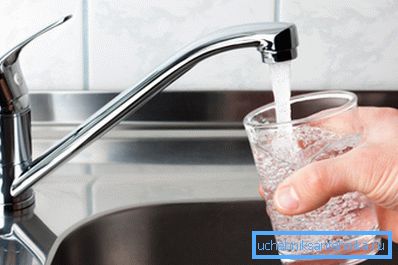
Characteristics of tap water
Temperature
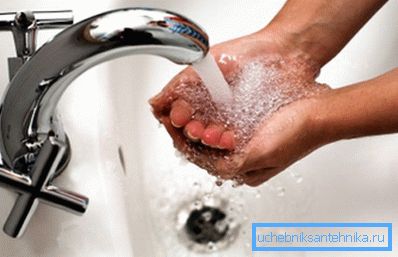
The water supply system supplies us with two types of raw materials:
- Cold water. Providing the population with cold water of potable quality is an obligatory function of the state, since water is a vital resource and is considered a strategic raw material;
- Hot water. Hot water does not cover the entire residential sector, even within cities. Most often, relatively new areas are connected to the DHW network, and in old houses geysers and electric boilers are used.
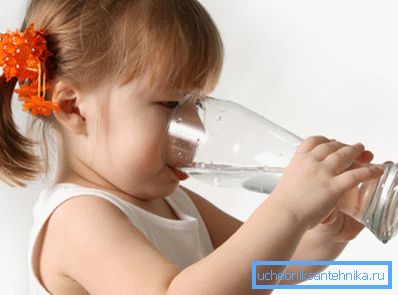
If we are talking about cold water supply, then the situation here is not entirely transparent: the fact is that the temperature of cold water in the water supply system is not standardized according to GOST.
At the same time, there is a Decree of the Government of the Russian Federation No. 306 of May 23, 2006, where the following values are indicated:
- During the heating period, the temperature of the cold-water supply water for the calculations is assumed to be 5? С;
- In a non-heating period, this value rises to 15? С.
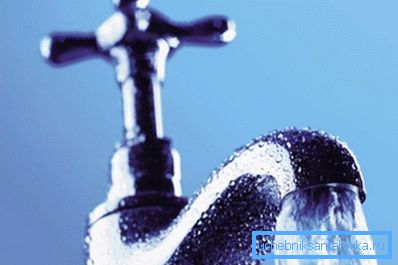
Note! These values are averaged and are used for calculating the consumption standards of utilities. They are not related to the norms that are obligatory for implementation.
However, there is another way of reasoning: if the water temperature in the line rises above 4-5? C, then bacteria begin to actively proliferate in it. Therefore, in order to ensure biological safety, the trunk line is filled with a liquid whose temperature is close to 4? С.
In the case of hot water supply, all norms are indicated, however, there is also confusion:
- According to SNiP 2.04.01-85, the temperature in hot water supply systems connected to open heating systems should not be lower than 60? С, and if the connection is made to closed systems - not lower than 50? С;
- According to SanPin 2.1.4.2496-09, regardless of the heat supply system used, hot water should be no colder than 60? С and not hotter than 75? С.
But even here we can reason from the point of view of safety, and then we will see that if the temperature in significant volumes of water falls below 55 ° C, then legionella begins to develop in them - a dangerous infection, the causative agent of legionellosis. Ideal conditions for its reproduction are fresh water with a temperature of 40 - 60? С.
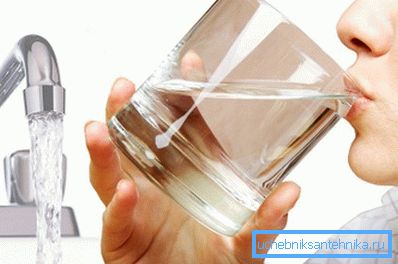
Note! Considering all this, we can assume that the temperature of 60 - 75? С is a safe norm for hot water.
Chemical composition
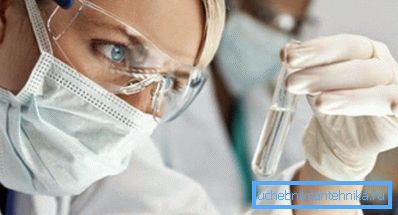
Water is one of the most versatile solvents, so almost any elements and compounds can be found in its composition. You should not be afraid of this, as this is the norm to which our body has adapted over millions of years of evolution.
However, in this matter, the balance and dosage is very important, because if an element or compound is in excess, it can entail a wide variety of consequences, including serious and dangerous for human health and life. That is why the content of substances is strictly regulated by sanitary standards.
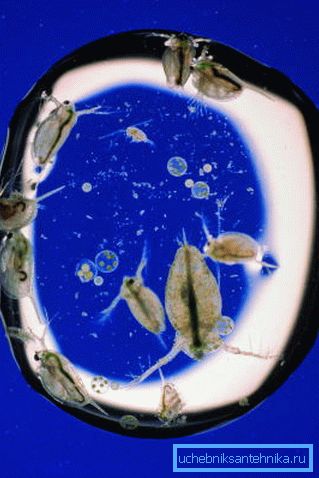
The most noticeable in the composition of such elements and compounds:
- Reagents used in the process of water treatment and disinfection. These are chlorine, hydrochloric and hypochlorous acids, coagulants, flocculants and anti-corrosion additives. The standard for chlorine is 0.3–0.5 mg / l; these compounds are toxic and can cause allergic reactions even in small concentrations;
- Iron. It is contained in natural river water, in artesian springs, and also gets into the process of fluid movement through steel and cast iron pipes. Regular consumption leads to the accumulation of iron in tissues and organs, the defeat of the gastric mucosa, the norm - 0.3 mg / l;
- Hydrogen sulfide. Dangerous poison, different rotten smell. Norm - 0.05 mg / l;
- Copper. Increased doses disrupt the digestive tract and lead to the destruction of the liver. Norm - 2 mg / l;
- Fluorine. May cause mental disorders and depression, while preventing the development of caries in a concentration of 1.2 mg / l;
- Molybdenum. Able to cause joint diseases and enlargement of the liver. The norm is 0.07 mg / l.
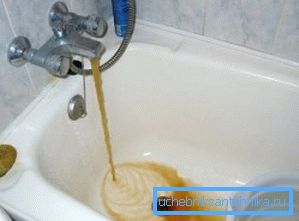
Note! This is an extremely short list of chemical elements present in the water supply system. The full list can be found in SanPin 2.1.4.1074-01.
There is also such an indicator as water hardness. This is the amount of mineral salts dissolved in it, mainly calcium, magnesium, sodium and other alkaline earth metals. This indicator depends on the region, for example, in St. Petersburg, the water is soft, and in the Moscow region - moderate hardness.

Constant use of hard water is fraught with violation of the salt balance of the body and the development of urolithiasis and kidney stones. In addition, salts are deposited on the heating elements and other nodes of household appliances and disable it.
To combat the increased rigidity, various softening methods are used:
- reverse osmosis,
- cationization
- electrodialysis, etc.
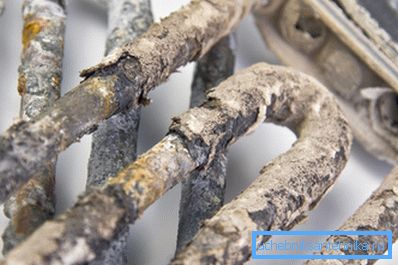
Note! The poor condition of trunk pipes and intra-quarter wiring is not only water loss in the water supply networks, but also a danger to the health of consumers.
Methods of preparation and disinfection
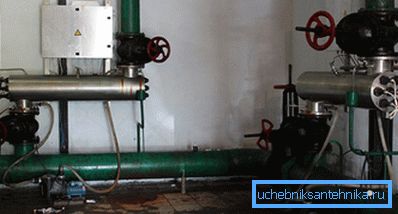
Disinfection methods can be divided into two groups:
- Chemical or reagent methods;
- Physical, or non-reagent methods.
The first group includes such activities as chlorination, ozonation, iodization, treatment with potassium permanganate, silver ions and other heavy metals. Comparative characteristics of tap water disinfection methods show that the most effective and safe method of disinfection to date is the treatment with gaseous chlorine or bleach.
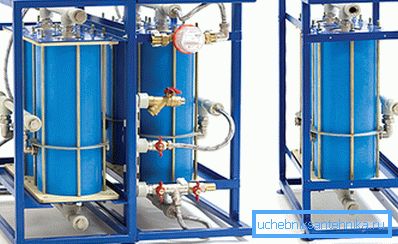
As a result of the hydrolysis of chlorine, hydrochloric and hypochlorous acids get into the water, and the latter dissociates into hypochlorite ions and hydrogen ions. The complex of free active chlorine (HOCl + OCl) has powerful bactericidal properties.
It is also quite effective treatment with ozone, which is also a strong oxidizing agent. In addition, as a result, the organoleptic properties of the liquid are improved - color, smell and taste.
The non-reagent preparation methods used are UV treatment, as well as various additional measures, such as deironing, softening, aeration, deodorization, defluorization, desalination, degassing, etc.
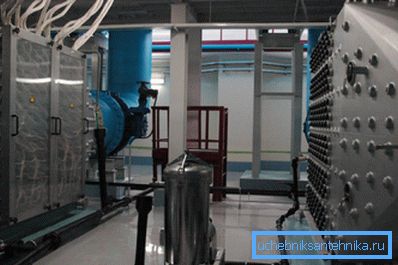
Of course, there are other methods of physical disinfection - treatment with electric discharges, boiling, irradiation with ionizing radiation, treatment with ultrasound.
However, these methods have not yet received industrial application, but the local one is completely. If you want to disinfect the water with your own hands - 30 minutes of boiling will make it sterile.
Note! It is impossible to determine the quality of water "by eye", by smell or other senses. The instruction requires taking samples and making a serious chemical analysis.
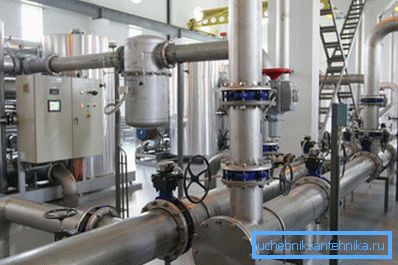
According to the legislation of the Russian Federation, the failure to comply with the norms of SanPin, SNiP and other documents regulating the quality and characteristics of drinking water entails criminal liability. Thus, the cost of non-compliance with such important rules is quite high.
Conclusion
SanPin tap water must meet a huge number of norms and other characteristics, the violation of which can be followed by serious legal and even criminal liability. The video in this article will help you understand how serious work is being done in preparing water for transportation to consumers.